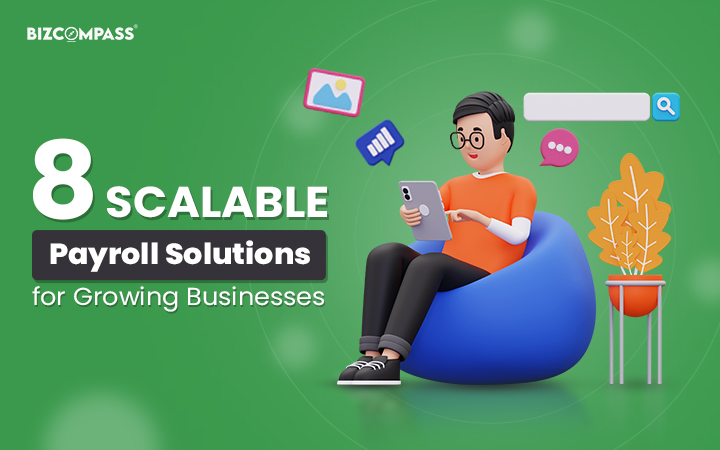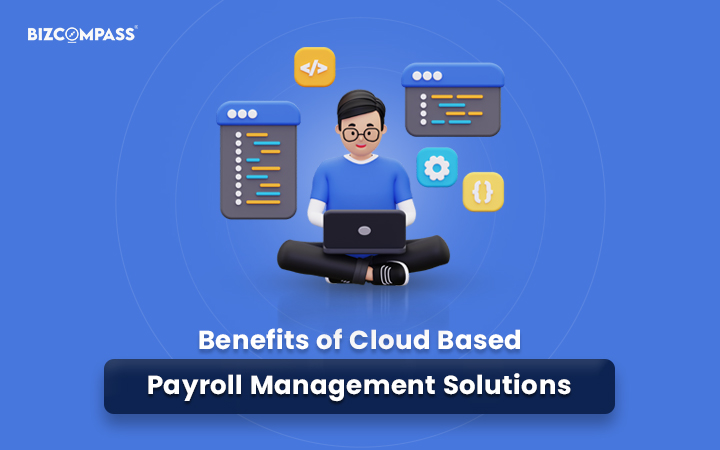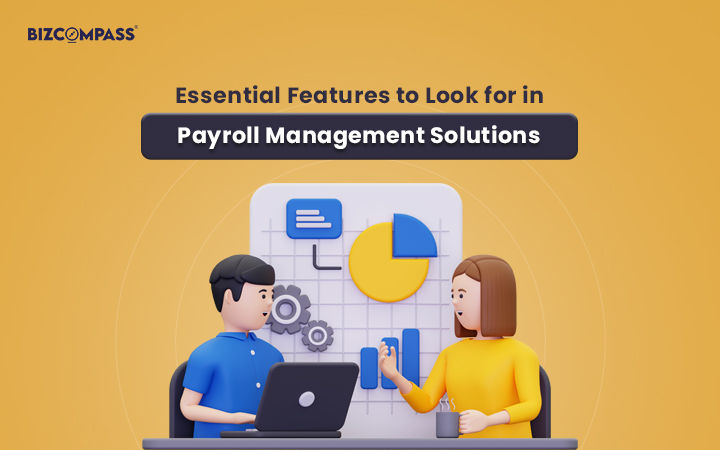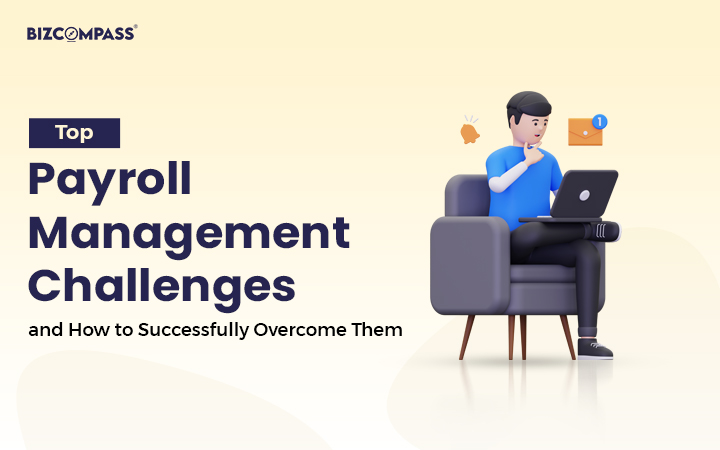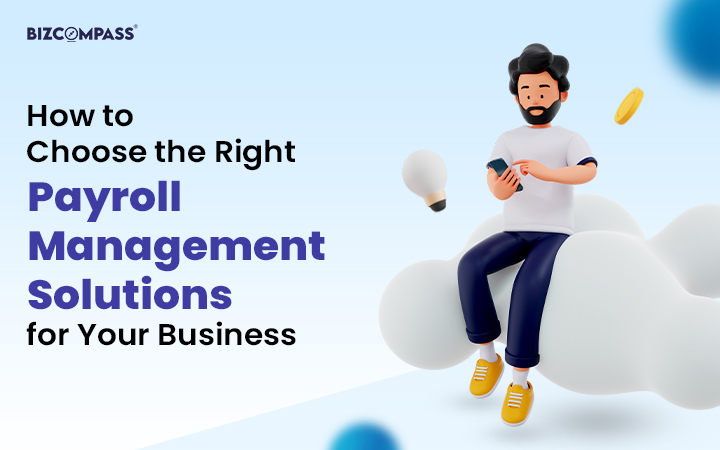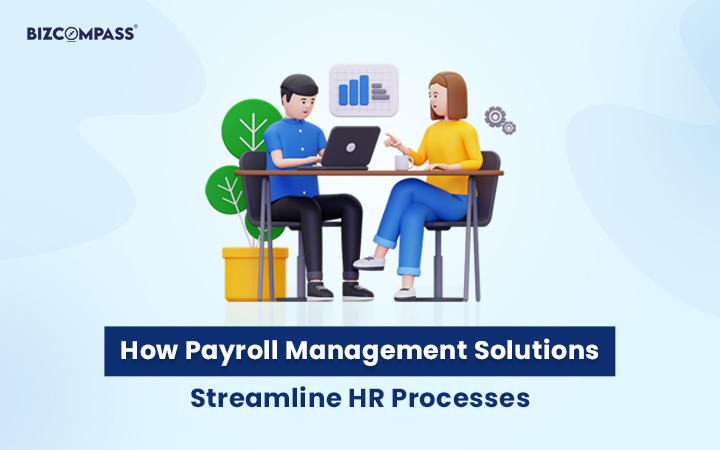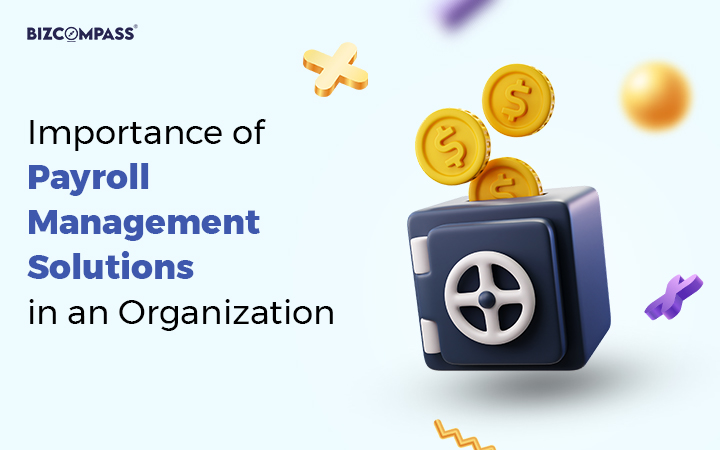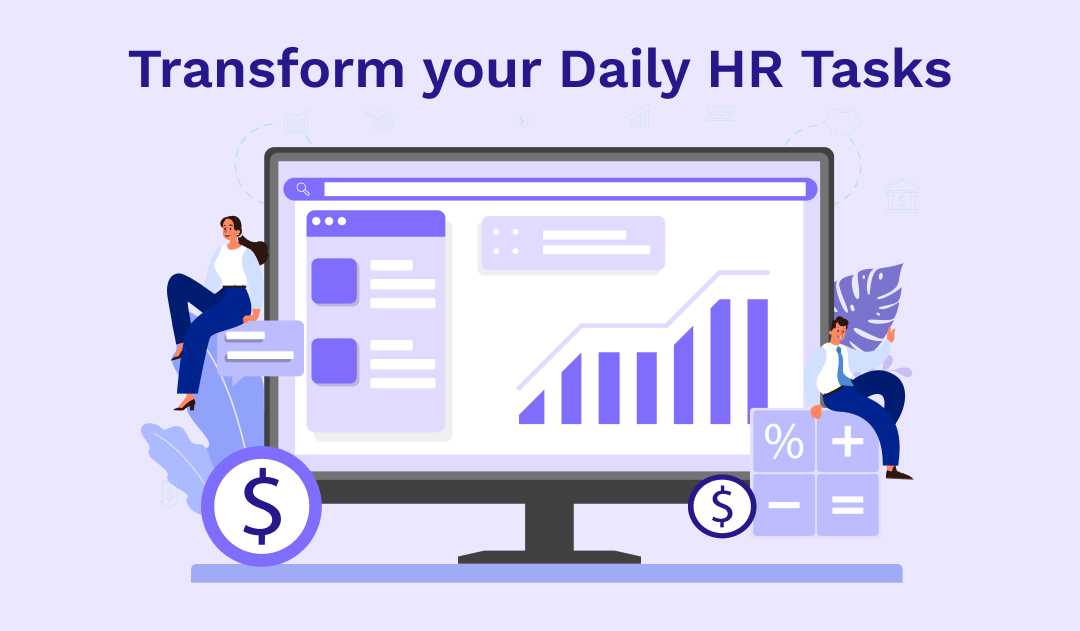Introduction
Payroll technology has become an indispensable component of efficient human resource management in the modern business landscape.
Payroll technology encompasses the tools, software, and systems organizations use to process and manage employee compensation, including wages, salaries, bonuses, and deductions. It involves various processes such as calculating payments, withholding taxes, generating pay stubs, and facilitating direct deposits.
Essentially, payroll technology streamlines the payroll process, reduces manual errors, ensures compliance with regulations, and enhances overall operational efficiency.
Staying updated on future trends in payroll technology is crucial for businesses to remain competitive and adaptive in an ever-evolving digital landscape.
Rapid technological advancements, including artificial intelligence, machine learning, and data analytics, are reshaping the payroll function. Emerging trends such as cloud-based payroll solutions, mobile payroll applications, self-service portals for employees, and automated tax calculations are revolutionizing how organizations manage their payroll processes.
By embracing these trends, businesses can streamline payroll operations, improve accuracy, enhance employee satisfaction, and ultimately drive organizational success.
Current State of Payroll Technology
The evolution of payroll technology traces back to the early 20th century when businesses began to adopt mechanical time clocks to track employee attendance and calculate wages.
With the advent of computers in the mid-20th century, payroll processing shifted to electronic systems, enabling faster calculations and more accurate record-keeping.
Over the years, payroll technology has continued to evolve, incorporating advancements such as software-based payroll solutions, online portals, and cloud-based platforms, revolutionizing how organizations manage their payroll processes.
Modern payroll technology offers many features and functionalities to streamline payroll processing and enhance efficiency.
Standard features include automated payroll calculations, tax withholding and reporting, direct deposit capabilities, employee self-service portals, time and attendance tracking integration, compliance management tools, and reporting and analytics functionalities.
These features empower organizations to automate repetitive tasks, ensure compliance with regulatory requirements, and provide employees with convenient access to their payroll information. Despite modern payroll technology's benefits, organizations need help managing their payroll systems.
Common challenges include compliance complexities due to changing tax regulations and labor laws, data security concerns related to handling sensitive employee information, integration issues with other HR and accounting systems, scalability limitations for growing businesses, and continuous software updates and maintenance to ensure system accuracy.
Manual data entry errors and administrative burdens can impede the efficiency of payroll processes, highlighting the importance of adopting advanced payroll technologies to overcome these challenges. Let’s delve into future trends and innovations in payroll technology.
Top 10 Future Trends in Payroll Technology
Stay ahead in payroll technology with our exploration of the top future trends, from AI-driven automation to blockchain-based security, revolutionizing payroll processing in the digital era.
01 Artificial Intelligence and Machine Learning
These technologies are revolutionizing payroll processing by automating repetitive tasks such as data entry, payroll calculations, and compliance reporting.
AI-powered payroll systems can extract relevant data from various sources, including timesheets and HR records, to streamline the payroll process, reduce errors, and save time for HR professionals. By automating routine tasks, organizations can improve operational efficiency, minimize manual intervention, and allocate resources to more strategic HR initiatives.
AI and ML algorithms enable predictive analytics in payroll processing, facilitating more accurate payroll forecasting and budgeting. By analyzing historical payroll data, employee trends, and external factors, such as economic indicators and labor market dynamics, predictive analytics can forecast future payroll expenses with greater precision.
This empowers organizations to proactively manage their financial resources, anticipate staffing needs, and make informed decisions to optimize payroll costs. Additionally, predictive analytics can identify patterns and trends in employee behavior, enabling HR departments to implement targeted retention strategies and improve overall workforce management.
02 Blockchain Technology
It offers enhanced security and transparency in payroll processes by creating a decentralized ledger of cryptographically secured and immutable transactions.
This ensures that payroll data remains tamper-proof and transparent, reducing the risk of fraud or unauthorized access. By leveraging blockchain technology, organizations can enhance data security, protect sensitive employee information, and build trust among stakeholders by providing transparent insights into payroll transactions. Blockchain technology simplifies international payroll transactions by enabling secure and efficient cross-border payments.
With blockchain, organizations can execute payroll transactions directly between parties, bypassing traditional intermediaries and reducing transaction costs and processing times.
Smart contracts on blockchain platforms can automate payment processes, ensuring timely and accurate salary disbursement to employees in different countries.
This streamlines international payroll management, eliminates currency conversion fees, and enhances the overall efficiency of global payroll operations.
03 Cloud-Based Solutions
These solutions offer flexibility and scalability for payroll management, allowing organizations to adapt to changing business needs and scale their payroll operations effortlessly.
With cloud-based payroll systems, businesses can easily adjust payroll processing capabilities, add or remove features as required, and accommodate growth without requiring extensive IT infrastructure investments.
This flexibility enables organizations to streamline payroll processes, reduce administrative overhead, and efficiently manage payroll operations, regardless of size or complexity.
Cloud-based payroll solutions provide real-time access to payroll data from anywhere, enabling HR professionals and employees to access critical payroll information anytime.
Through web-based portals or mobile applications, users can securely access their payroll data, view pay stubs, update personal information, and submit time-off requests on the go.
This real-time accessibility enhances employee satisfaction, improves communication between HR departments and employees, and facilitates seamless collaboration, regardless of geographical location. Moreover, real-time access to payroll data enables HR professionals to make informed decisions and respond promptly to payroll-related inquiries or issues.
04 Integration with Human Resources Systems
Integrating payroll technology with Human Resources systems facilitates a seamless data flow between the two functions.
This integration streamlines employee onboarding, benefits administration, and time tracking, ensuring data is synchronized and consistent across systems.
By breaking down silos between payroll and HR, organizations can eliminate redundant data entry, reduce errors, and enhance overall data accuracy in managing employee information.
It improves employee experience by providing a unified platform for accessing and managing personal and payroll-related information.
Employees can easily view and update their details, access pay-related documents, and submit requests, fostering self-service capabilities.
This empowers employees and enhances data accuracy by eliminating manual data entry errors and ensuring that information is consistently updated across payroll and HR functions. The result is a more streamlined and efficient employee experience.
05 Mobile Payroll Applications
Mobile payroll applications offer accessibility and convenience for employees by providing them with instant access to their payroll-related information anytime, anywhere.
Employees can easily view their pay stubs, check their earnings, and access essential payroll documents directly from their mobile devices. This eliminates needing to log in to a desktop computer or visit the HR department.
They enable on-the-go payroll management by allowing managers and HR professionals to approve payroll-related tasks and transactions directly from their mobile devices.
Whether traveling, attending meetings, or working remotely, managers can review and approve timesheets, expense reports, and other payroll-related requests in real-time, ensuring timely processing and reducing administrative delays. This mobile functionality enhances efficiency and flexibility in payroll management, contributing to overall workforce productivity.
06 Self-Service Portals
Self-service portals empower employees by granting them access to their payroll information, including pay stubs, tax forms, and benefit details.
By allowing employees to manage their payroll-related tasks and access pertinent information independently, self-service portals enhance transparency and promote employee autonomy, contributing to a more positive employee experience.
They alleviate the administrative burden on HR and payroll departments by enabling employees to handle routine payroll tasks.
By allowing employees to update personal information, submit time-off requests, and access relevant documents through self-service portals, HR professionals can focus on strategic initiatives and higher-value tasks, increasing the departments' efficiency.
07 Advanced Data Analytics
Advanced data analytics harnesses payroll data to inform strategic decision-making processes within organizations. By analyzing payroll data, organizations can gain valuable insights into workforce trends, employee performance, and compensation strategies, enabling them to make data-driven decisions that optimize operational efficiency and drive business growth.
These tools enable organizations to identify trends and patterns in payroll expenses, such as seasonality, overtime trends, and cost drivers. By uncovering these insights, organizations can implement targeted cost-saving measures, optimize resource allocation, and improve budget forecasting accuracy, ultimately enhancing financial management and sustainability.
08 Personalization and Customization
Personalization and customization involve tailoring payroll processes to meet individual businesses' unique needs and preferences.
This includes configuring payroll systems and workflows to accommodate specific industry requirements, organizational structures, and compliance standards.
Personalization extends to offering employees personalized payroll experiences, such as customizable pay schedules, benefits packages, and payment methods.
Organizations can enhance employee satisfaction and engagement by allowing employees to personalize their payroll preferences, leading to a more positive workplace environment.
09 Regulatory Compliance Solutions
Regulatory compliance solutions leverage automation to conduct regular checks and updates on payroll processes, ensuring organizations remain compliant with evolving legal and regulatory requirements without manual intervention.
These solutions help organizations navigate complex payroll regulations by providing tools and resources to interpret, implement, and adhere to legal requirements, minimizing the risk of non-compliance and associated penalties.
10 Cybersecurity Measures
As cyber threats continue evolving, organizations prioritize cybersecurity measures to safeguard sensitive payroll data from unauthorized access, data breaches, and cyber-attacks.
By implementing robust security measures, organizations can mitigate the risk of data theft and ensure the confidentiality, integrity, and availability of payroll information.
Organizations are adopting advanced security protocols and encryption techniques to strengthen their cybersecurity posture and protect payroll data from potential threats.
This includes implementing multi-factor authentication, encryption technologies, access controls, and regular security audits to identify and address vulnerabilities in payroll systems.
Investing in cybersecurity measures can enhance data protection and build trust among employees and stakeholders.
Conclusion
In exploring future trends in payroll technology, we've covered a range of innovations poised to transform payroll processes. From Artificial Intelligence and Machine Learning for automation to Blockchain technology for enhanced security and from cloud-based solutions to mobile applications and self-service portals, these trends promise to revolutionize how organizations manage their payroll operations.
Additionally, advancements in advanced data analytics, personalization, regulatory compliance solutions, and cybersecurity measures underscore the evolving landscape of payroll technology.
Embracing innovation in payroll technology is essential for future-proofing payroll processes and staying competitive in today's dynamic business environment.
By adopting innovative technologies and staying abreast of emerging trends, organizations can enhance operational efficiency, improve data accuracy, enhance employee satisfaction, and mitigate risks associated with compliance and cybersecurity.
As businesses navigate the complexities of modern payroll management, it's imperative to stay ahead of the curve in payroll technology adoption. By proactively embracing innovative solutions and leveraging emerging trends, organizations can optimize payroll processes, drive operational excellence, and position themselves for long-term success in the digital age.
Therefore, businesses are encouraged to prioritize investment in cutting-edge payroll technologies and stay vigilant in monitoring and adopting future trends to maintain a competitive edge in the rapidly evolving landscape of payroll management. Don’t forget to check out Bizcompass, Which is one of the world's most advanced payroll management solutions.

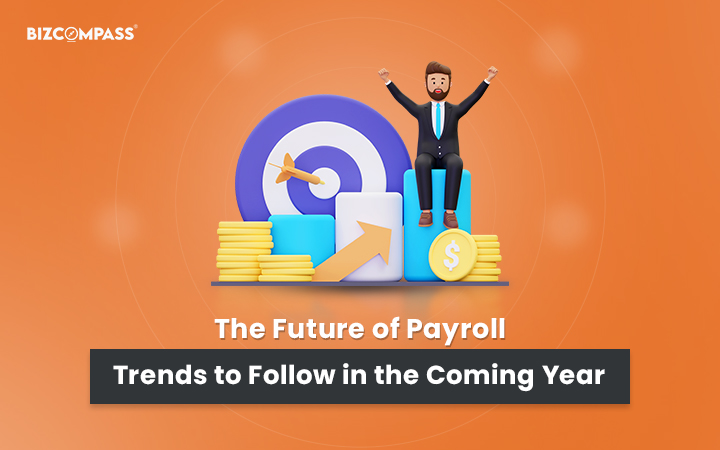
 >
>
